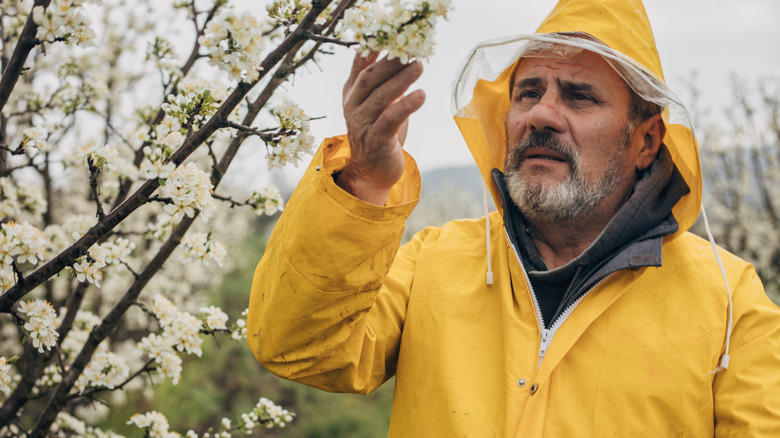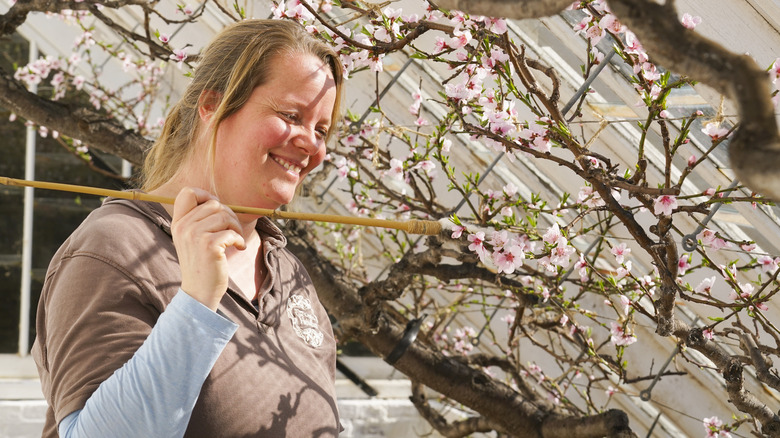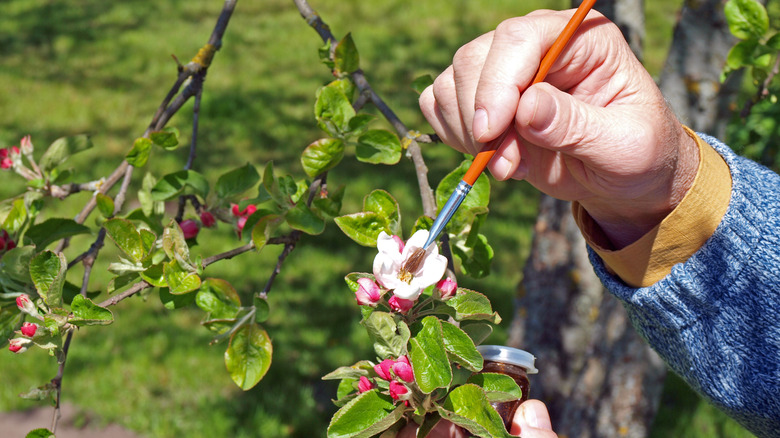What Is Hand Pollination And Why You Should Try It
Since humankind first began growing crops, we've sought ways to increase our yield. One time-consuming yet rewarding technique proven to increase fruit production is hand pollination. In fact, we have Edmund Albius' hand pollination skills to thank for widescale vanilla production, which is very difficult to grow naturally. Hand pollination, sometimes called artificial pollination, is quite simply what it sounds like; pollinating flowers by hand. To hand pollinate a garden, you can use a cotton swab, paintbrush, or similar tool to gather pollen from the flower's stamen and transfer it to the pistils. By speeding along the natural pollination process, you'll encourage fruits to develop more quickly and be able to reap a bigger harvest.
Have you tried everything to inspire pollination aside from dimming the lights, pouring wine into the soil, and blasting "Careless Whisper" in your backyard? Hand pollinating may be the answer you're searching for, and playing matchmaker in your garden is much simpler than it seems.
How hand pollination works
Before you rush out to the garden and garner stares from your neighbors, it's important to understand how fruit production works. Most plants have flowers with both "male" and "female" reproductive parts, although some plants, like ginkgos and kiwis, are either male or female. The male parts of a flower include the stamens, which release pollen from anthers on their tips. The female parts of a flower are collectively called the pistil, which has a sticky surface that collects pollen. When pollen is transferred to the pistil, genetic information travels down the pistil, and a zygote begins to form deep within the flower. Flowers will then close their petals and eventually wither away as the zygote grows into a seed-carrying fruit.
Hand-pollination may be necessary if you don't have many natural pollinators in your area, such as bees, butterflies, and hummingbirds. Even if your yard is buzzing with bees, hand-pollinating can still be a good method to increase your garden's output of fruits and vegetables. Hand pollinating is also a good idea to prevent awkward, inedible fruits due to insufficient pollination. Some of the best plants for hand pollinating are nightshade vegetables, like tomatoes and peppers, as well as plants that grow separate male and female blooms, like the squash family.
Pollinating your flowers by hand
The best time to hand pollinate most plants is early morning when the blooms are fresh and firm. To pollinate your flowers, you'll need a paintbrush, cotton swap, feather, or nearly anything that resembles a little bee's fuzzy bottom. An electric toothbrush is a clever idea to mimic buzzing bees. According to Scientific Reports, their vibrations are used to help release pollen from the anthers. Sometimes this vibration and pollen drop is all you need to fertilize self-pollinating flowers, including strawberries, tomatillos, peppers, eggplant, okra, and more. Cross-pollinating plants like squash, cucumbers, and corn have male and female flowers on the same plant. To pollinate these, gently brush the tip of your paintbrush onto the anthers of a male flower until it is saturated with pollen, then transfer to the pistil of a female flower. Alternatively, you can detach a male flower, remove the petals and touch the stamens directly to a female blossom's pistil. For single-sex plants like kiwis, you'll need to transfer pollen from a the flower of a male plant to the bloom of a female.
Hand pollinating can be repeated every few days until you see petals closing and fruit starting to form. To encourage receptivity and growth, ensure that plants have adequate water, nutrients, and sunlight. If this seems like a lot of work, leave it to the pros! Plant wildflowers, create bee water fountains, and even try a pheromone bee bait to bring more pollinators into your yard.


